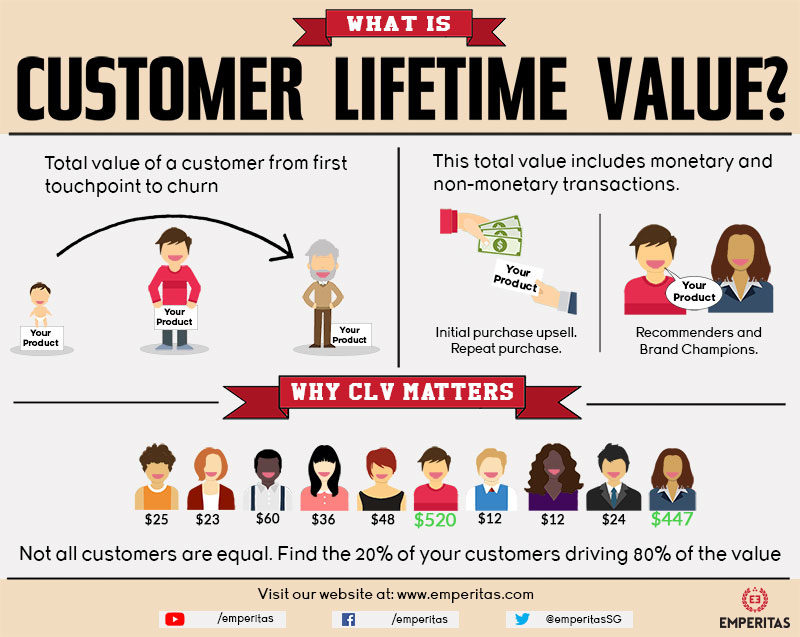Customer Lifetime Value (CLV) is arguably the most important business metric from an economic standpoint. This is because it captures the value of the entire customer relationship from birth (initial purchase) to death (churn). CLV can be calculated from data that are available to all businesses, and it makes a powerful metric for predictive models that drive profitability and increase competitive advantage. For these reasons, it’s important to understand how CLV is being utilized and how you can calculate it.
Use Cases for Customer Lifetime Value
CLV is one of the few metrics that’s useful across the entire organization because CLV helps identify your best customers (see the infographic below). Knowing who these high-value customers allow you to lower acquisition costs by directly marketing to them instead of average customers (who are always of lower lifetime value). Similarly, CLV can be used to increase sales conversions by prioritizing deals for best customer types (and personalizing their sales experience). CLV also makes a great metric for guiding feature development in products and reducing customer churn among the best customer segments.
Calculating Customer Lifetime Value
CLV is calculated by examining all touchpoints of the customer experience, with an extra emphasis on the sales/financial touchpoints. Traditional CLV requires data on the recency of a customer’s last purchase, the frequency that they purchase, and the monetary value of their purchases. In addition to these financial metrics, you can add a layer of non-monetary insight through surveys by uncovering customer preferences, their actual willingness to pay, and their likelihood to recommend (often measured by Net Promoter Score). By combining the data from all of these touchpoints, it’s possible to create predictive models that don’t just assign a value for the customer given their history to date, but which include an estimation of their future value (between now and eventual churn) for a complete picture of “lifetime” value.
Not All Customer Are Equal
The Pareto Principle in economics (know as the 80/20 rule in marketing) shows that 80% of all customer value will come from just 20% of all customers. These 1 in 5 customers often exhibit high non-monetary values in their CLV through customer surplus value (the value they get above the price they pay) and a willingness to recommend your product or service. These recommendations are a major non-monetary component of CLV, and Nielsen Group found that “92% of consumers believe recommendations from friends and family over all forms of advertising.” Your 1 in 5 customers disproportionately represent your brand champions and a majority of all recommendations made. If you don’t treat these high-value customers differently than the average customer, you’re going to lose them to a competitor. CLV as a metric helps you balance what the customers want and with what you can profitably provide. A win-win for everyone!
Want to start getting the most out of your CLV Data? Learn how to start Interpreting Data Like A Pro.



